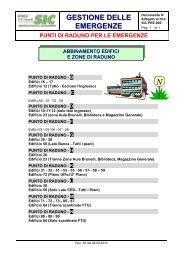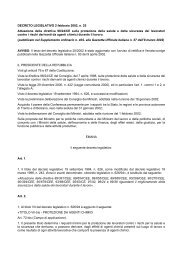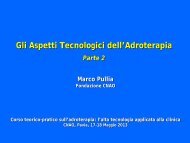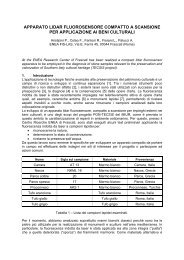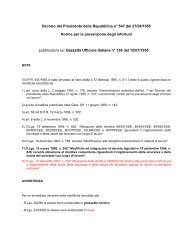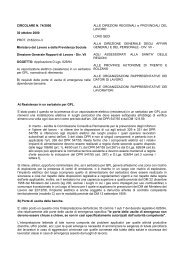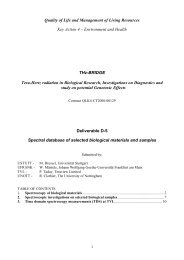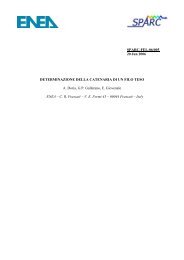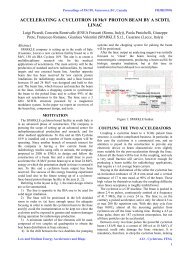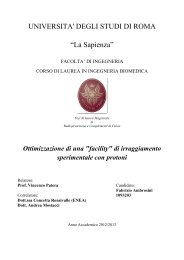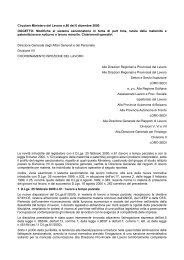Theory, Design and Tests on a Prototype Module of a Compact ...
Theory, Design and Tests on a Prototype Module of a Compact ...
Theory, Design and Tests on a Prototype Module of a Compact ...
You also want an ePaper? Increase the reach of your titles
YUMPU automatically turns print PDFs into web optimized ePapers that Google loves.
62 4. CIRCUIT MODEL<br />
the bars is proporti<strong>on</strong>al to the amplitude <strong>of</strong> the field <str<strong>on</strong>g>and</str<strong>on</strong>g> all the bars<br />
are normalized to <strong>on</strong>e. The graph is in a percent scale. Note that the<br />
coupling cavities, which are represented by the even bars, are nominally<br />
uncharged.<br />
100<br />
90<br />
80<br />
70<br />
60<br />
50<br />
40<br />
30<br />
20<br />
10<br />
0<br />
%<br />
50<br />
0<br />
100<br />
0<br />
100<br />
0<br />
100<br />
1 2 3 4 5 6 7 8 9 # cell<br />
Figure 4.4. The relative level <strong>of</strong> field in the cavities in<br />
the imperturbed case.<br />
Therefore, the lateral cavities produce an half voltage <str<strong>on</strong>g>and</str<strong>on</strong>g> we can<br />
drop this dissymmetry by c<strong>on</strong>sidering <strong>on</strong>ly a c<strong>on</strong>tributi<strong>on</strong> i = 1 which<br />
is the sum <strong>of</strong> the two half voltages. In such a way we do not directly<br />
c<strong>on</strong>sider the cavity i = N +1 <str<strong>on</strong>g>and</str<strong>on</strong>g> we deal with N/2 accelerating cavities<br />
<str<strong>on</strong>g>and</str<strong>on</strong>g> index i goes from 1 to N. Then, the value <strong>of</strong> Vci for the generic<br />
cavity is<br />
Vci(ε1, . . . , εN) =<br />
+<br />
−<br />
1<br />
jωCeqi<br />
N<br />
ε<br />
p=1<br />
∗ p ε<br />
q=i<br />
+ q<br />
N<br />
⎧<br />
<br />
⎨<br />
N<br />
(N − i + 1)2<br />
1 −<br />
⎩<br />
N<br />
N<br />
ε<br />
p=1<br />
∗ p ε<br />
q=i<br />
− q<br />
N 2<br />
0<br />
p=1<br />
ε ∗ p<br />
50<br />
2<br />
(i−q)<br />
N − i + 1 − (−1)<br />
N<br />
<br />
2q − N − i<br />
<br />
for i = 2s + 1 with s = 1, 2, . . . , N/2 − 1<br />
N<br />
+<br />
(4.63)<br />
where Ceqi is the capacitance <strong>of</strong> the cavity with number i <str<strong>on</strong>g>and</str<strong>on</strong>g> it is the<br />
series <strong>of</strong> the capacitances <strong>of</strong> the two half cavities with indexes i−1 <str<strong>on</strong>g>and</str<strong>on</strong>g>



